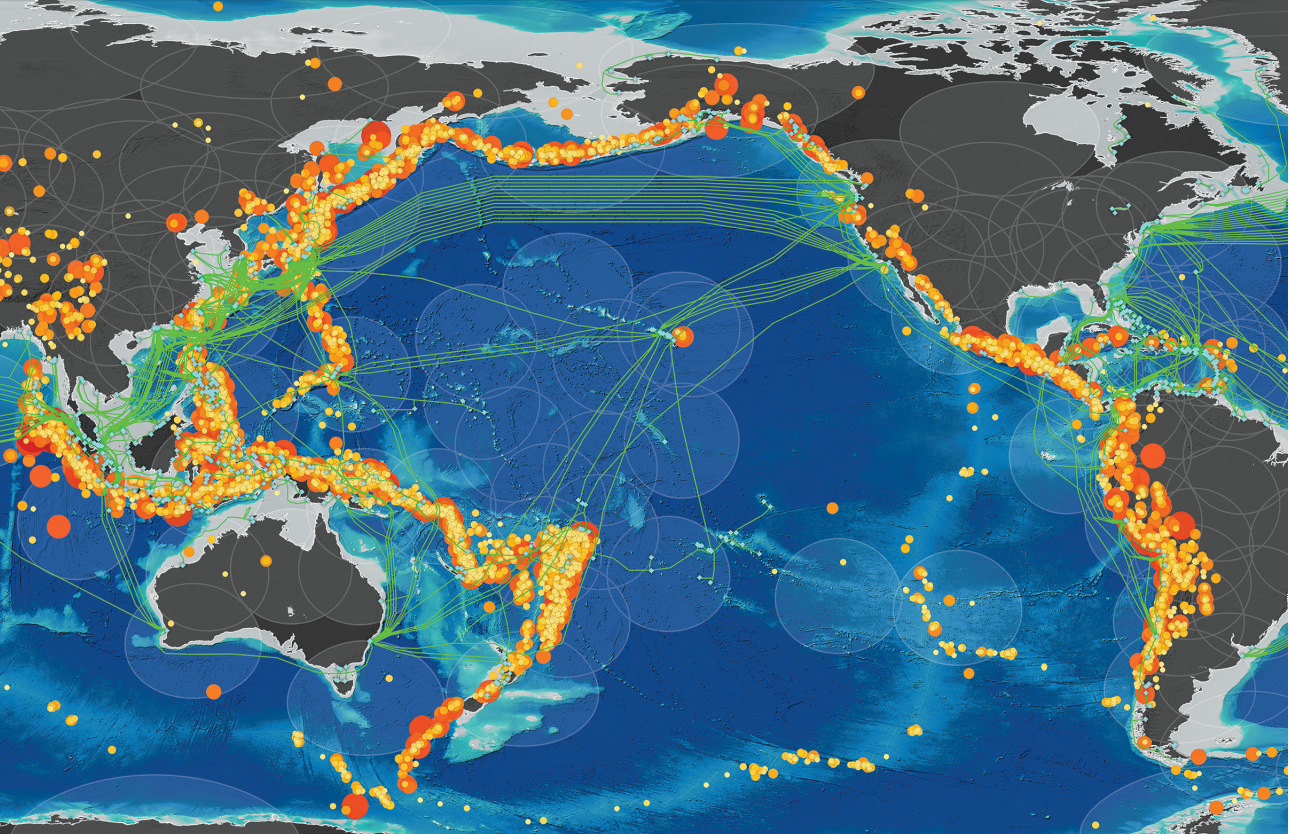News release
From:
Using “Curie” – Google’s 10,000-kilometer-long underwater fiber-optic cable connecting Los Angeles, California and Valparaiso, Chile – researchers have demonstrated a novel method for detecting deep-sea seismic activity and waves at the ocean’s surface. The approach, which monitors the traffic that courses ceaselessly through networks of transcontinental telecommunication cables, successfully detected storm swell events and earthquakes across a nine-month observation period. “This approach requires no new infrastructure or instrumentation, but instead relies on utilizing observations already made to extract the telecommunications data received at the end of the cable,” writes William Wilcock in a related Perspective. The new study suggests that the approach could transform our oceanwide web-work of fiber optics into a continuous, real-time earthquake and tsunami monitoring and detection system. Monitoring seismic activity on the seafloor is crucial for studying Earth’s crust and detecting offshore earthquakes and tsunami threats. However, deploying and maintaining geophysical instruments on the seafloor is difficult and expensive, and, as a result, underwater seismic stations are relatively rare in vast regions of the ocean. Several emerging technologies are being explored to address this data gap, including laser interferometry and distributed acoustic sensing methods that effectively transform existing trans-oceanic fiber-optic telecommunications cables into kilometers-long seismic sensors. However, to date, these solutions have remained limited by the need for specialized laser detection equipment and dedicated “dark fibers.” According to Zhongwen Zhan and colleagues, if only a fraction of the million-kilometer submarine fiber optic network was used as geophysical sensors, vast improvements in the amount of seismic data and coverage for large portions of the seafloor could be achieved. Zhan et al. present a new approach using the polarized light signals commonly used to transmit information through optical telecommunication cables and the Google-owned Curie submarine fiber optic cable, which spans the Pacific Ocean’s seismically active eastern margin between North and South America. Because light polarization is sensitive to temperature changes, the seafloor’s thermal stability allowed the authors to monitor the regular optical telecommunication traffic and attribute observed changes to seismic- and pressure-related strain in the cable. Zahn et al. recorded ~30 ocean storm swell events and ~20 moderate-to-large earthquakes across the nine-month continuous observation period, including the magnitude 7.4 earthquake event near Oaxaca, Mexico in June of 2020.



 Pacific; International
Pacific; International



